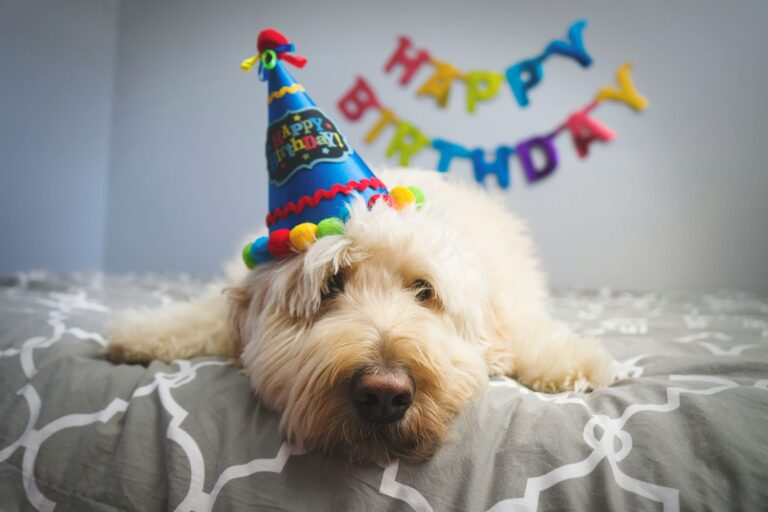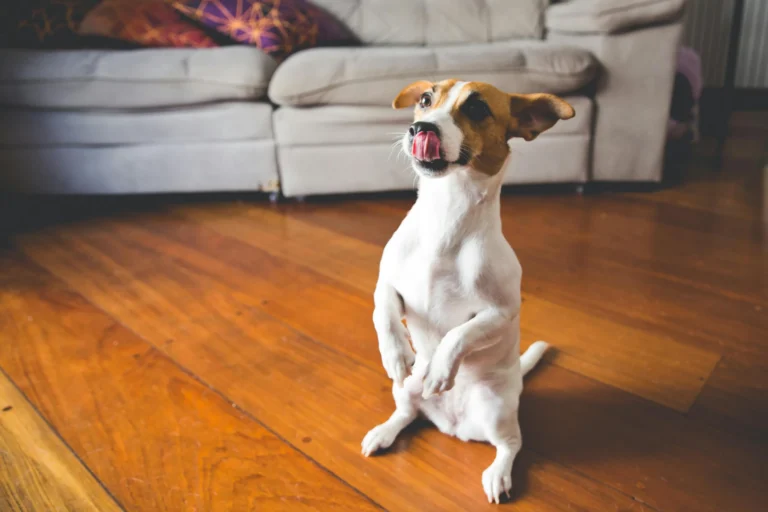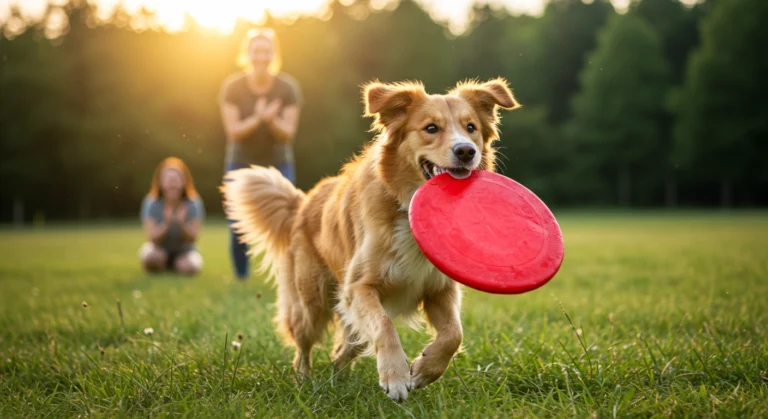Why Does My Dog Run Away from the New Puppy?
It started as an exciting day. You brought home a new puppy, expecting wagging tails and instant bonding. But instead of a warm welcome, your older dog bolted.
Every time the puppy approaches, your once-confident dog retreats, avoiding interaction at all costs. It’s confusing and heartbreaking why is your beloved pet acting this way?
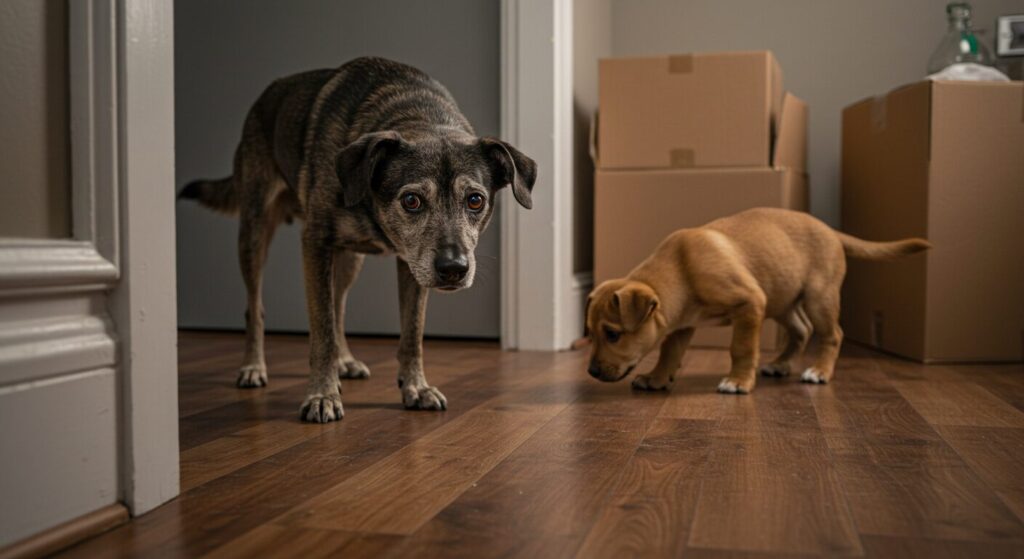
And more importantly, how can you fix it?
Dogs, like humans, have unique personalities and emotions. A new puppy can be a major disruption, triggering fear, anxiety, or territorial behavior in an older dog. Understanding the root cause is the first step toward creating a harmonious home where both pets feel safe and secure.
Why Does My Dog Run Away from the New Puppy?
There are several reasons why your older dog might be avoiding or running away from a new puppy. Each case is unique, but some common factors could be at play.

1. Overwhelmed by the Puppy’s Energy
Puppies are full of boundless enthusiasm jumping, biting, and playing nonstop. If your older dog has a calm, laid-back nature or has slowed down with age, this sudden burst of energy might be overwhelming. Instead of engaging, your dog may choose to distance itself from the chaos.
2. Fear of the Unknown
Dogs thrive on routine and familiarity. A new puppy brings unfamiliar smells, sounds, and behaviors. Some older dogs feel intimidated by this sudden change and may retreat until they feel more secure.
3. Past Negative Experiences
If your dog has had a bad experience with puppies such as rough play or being overwhelmed they may instinctively avoid the new addition. Trauma can have lasting effects, and patience is needed to help rebuild their confidence.
4. Lack of Socialization
Some dogs, especially those raised as the only pet, may not know how to interact with younger dogs. If they haven’t been exposed to puppies before, they might be unsure how to handle unpredictable behavior, leading to avoidance.
5. Possessiveness and Territorial Instincts
Dogs are naturally territorial. A new puppy can be seen as an intruder, especially if your older dog fears losing their space, toys, or even your attention. This may cause stress, leading them to avoid interactions.
How to Help Your Dog Adjust to the New Puppy
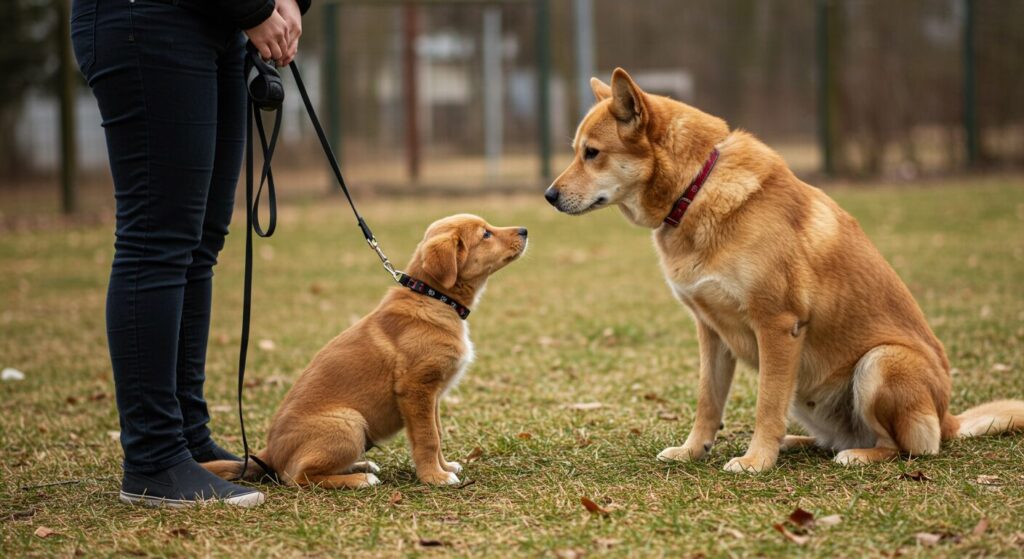
1. Give Your Older Dog Space and Time
Forcing interactions can backfire. Allow your older dog to approach the puppy at their own pace. Provide safe spaces where they can retreat when feeling overwhelmed.
2. Supervise and Control Initial Interactions
Introduce them in a neutral, controlled environment. Keep the puppy on a leash or distracted with toys. Short, positive meetings can help build comfort over time.
3. Encourage Positive Associations
Pair puppy interactions with treats, praise, or favorite activities. This helps your older dog associate the new puppy with positive experiences rather than stress or fear.
4. Give Your Older Dog Individual Attention
A common mistake is focusing too much on the puppy while unintentionally neglecting the older dog. Continue their regular routines, walks, and playtime to reassure them that they are still a valued part of the family.
5. Manage the Puppy’s Energy Levels
Help your puppy burn off excess energy through structured play, training, and exercise before introducing them to your older dog. A calmer puppy is less likely to overwhelm an adult dog.
6. Use Calming Aids if Needed
Pheromone diffusers, calming treats, or anxiety wraps can help reduce stress for both dogs during the transition period.
7. Seek Professional Help if Necessary
If your dog continues to avoid the puppy after weeks of careful introduction, consulting a professional dog trainer or behaviorist can provide personalized strategies.
Signs Your Older Dog is Adjusting
It may take days or even months, but over time, you may notice small signs of progress:
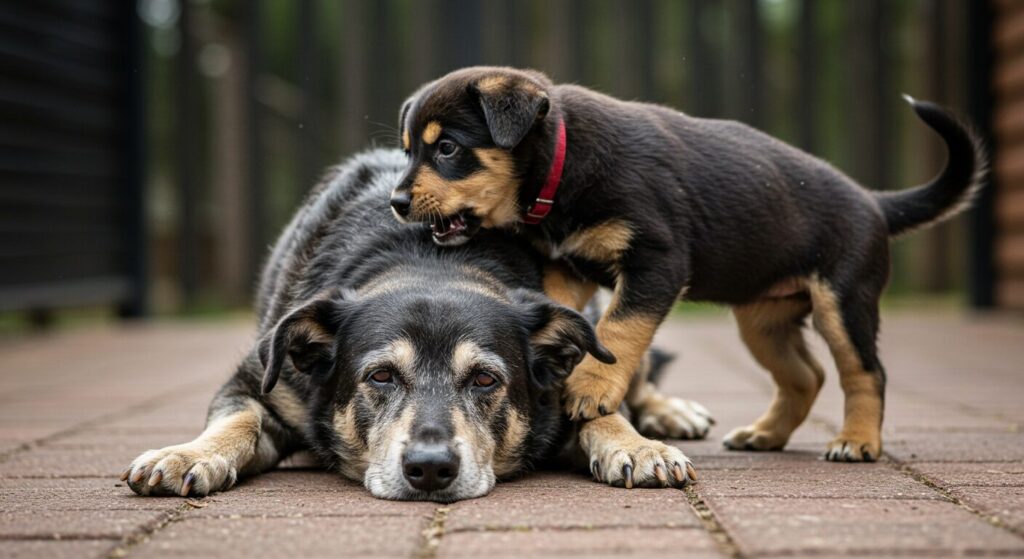
- They begin sniffing the puppy instead of running away.
- They allow the puppy to be near without immediate retreat.
- They initiate brief moments of play.
- Their body language becomes more relaxed in the puppy’s presence.
When to Be Concerned
If your older dog displays aggression, excessive stress (such as refusing to eat or hiding for extended periods), or if the avoidance continues beyond a few months despite positive reinforcement, intervention may be needed. Ignoring these signs can lead to long-term behavioral issues that may make coexistence difficult.
Conclusion: Creating a Peaceful Bond
Your older dog running away from a new puppy isn’t a sign of failure it’s simply their way of processing change. With patience, understanding, and proper introductions, most dogs learn to coexist and even form strong bonds over time. Each step forward, no matter how small, is progress toward a harmonious household where both pets feel safe, secure, and loved.
Get dog tips & joy! Subscribe to Paw Prints!



